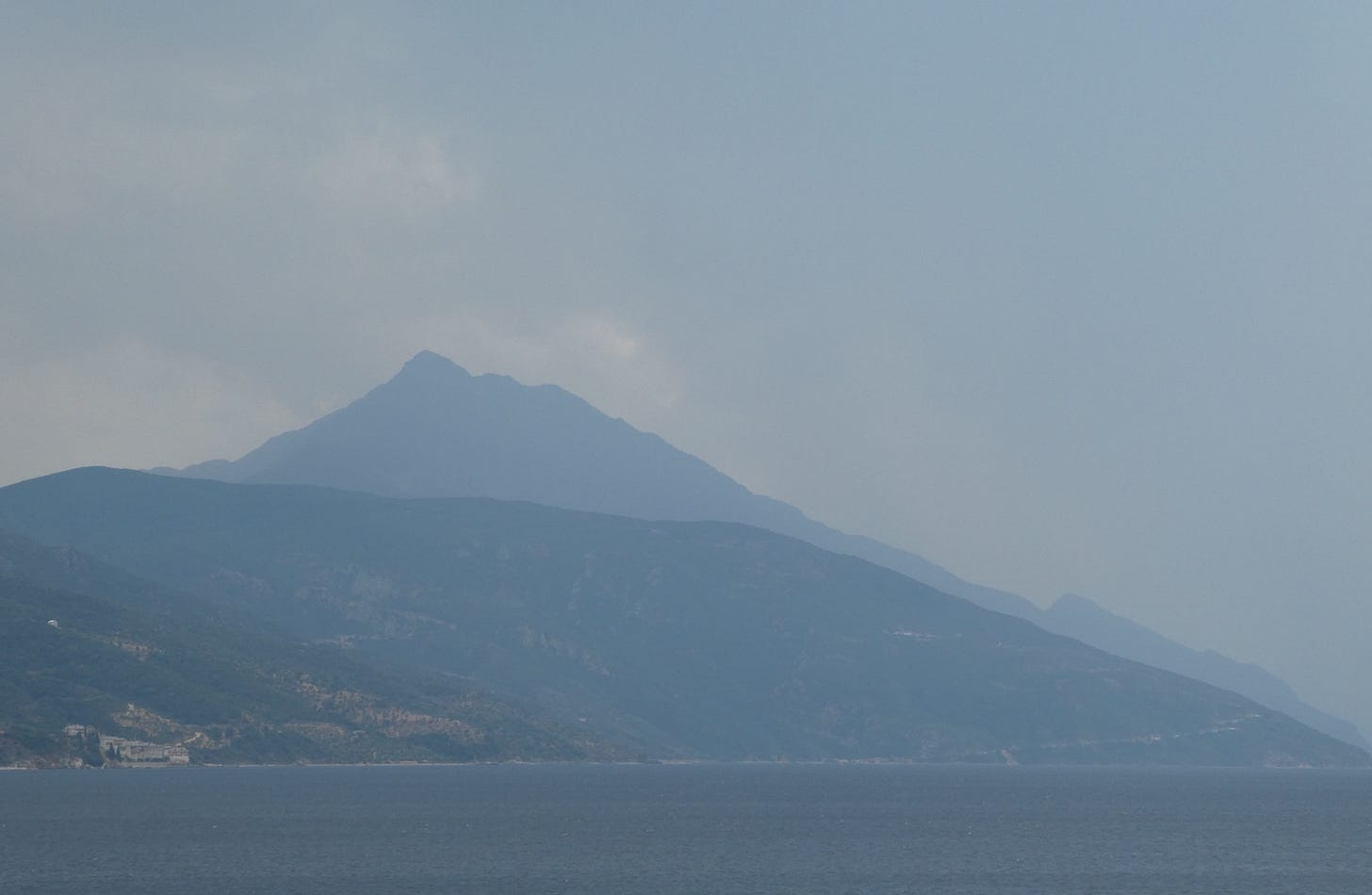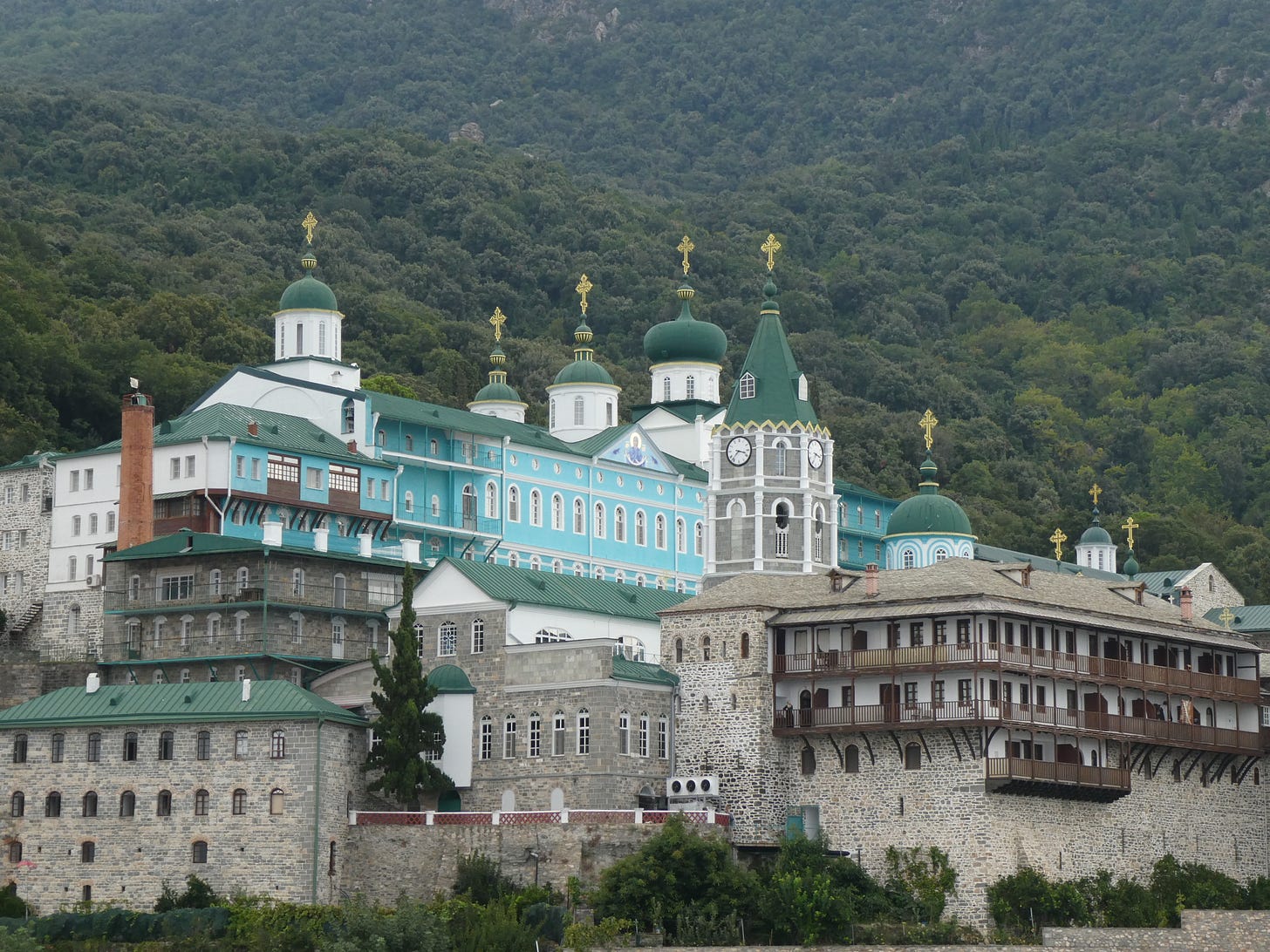
There is a thin finger of land which juts out from Macedonia, in north-eastern Greece, into the Aegean Sea. It is around fifty miles long, and it is layered with old forest. At the southern tip is a great mountain, over 2000 metres tall. In the summer months it bakes, in the winter is is snow-laden. There are no cities here. Nobody swims from the golden beaches. Nobody wears shorts in the summer heat. There are roads, but not many. There are cars, but not many. And there are no women at all, with one exception.
Agion Oros - the Holy Mountain - is also known as the Garden of the Panagia: the Virgin Mary. She is everywhere here: seen and unseen, in the forests and on the walls, working through the miracle icons, passing through the caves and cells at night making oil laps sway in the unseen breeze. Strange things happen. They are not so strange, really, once you understand.
This is Mount Athos, the spiritual heart of the Eastern Orthodox church, and, I would say, of the entire Christian faith. There is nobody on this peninsula except monks, or those who work for them or are visiting them, and this has been true for over a thousand years. Twenty-one monasteries, along with countless sketes (smaller monasteries), cells, houses and caves are home to an estimated 1500 monks, though probably the exact number cannot be counted. For over a millennium, the Divine Liturgy has been sung here daily, hundreds of times in hundreds of churches, from the golden and cavernous to the tiny and poor.

I have always been drawn to monks and hermits - especially hermits - since long before I found myself becoming Christian. I wrote a novel about one once, but it didn’t sate my curiosity, if that’s what it is. It probably isn’t. There is something here that I have to solve, maybe, or see.
Keep reading with a 7-day free trial
Subscribe to The Abbey of Misrule to keep reading this post and get 7 days of free access to the full post archives.




